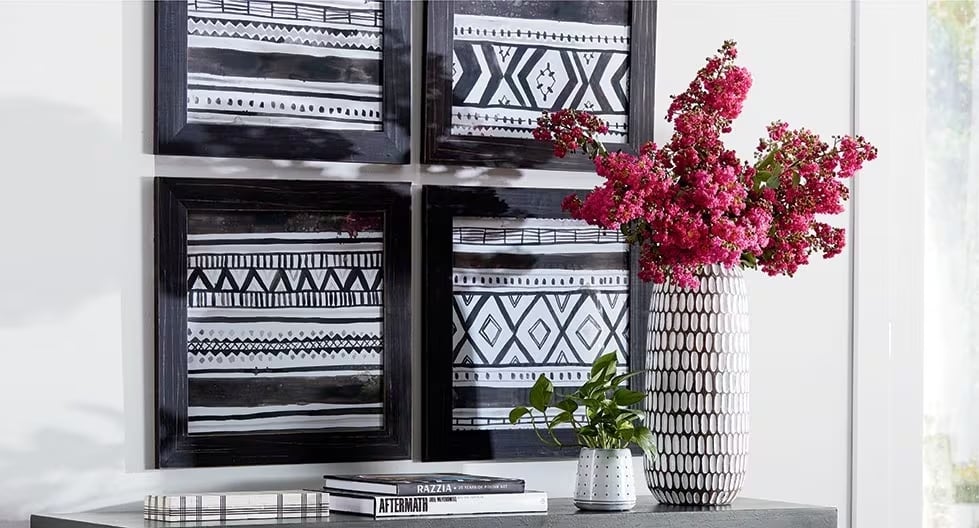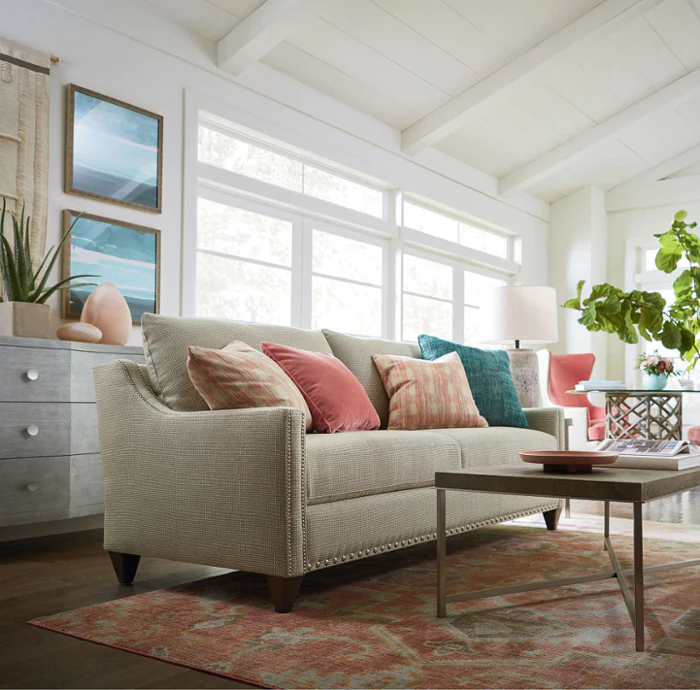Living Room Lighting Ideas
Updated 9/19/22
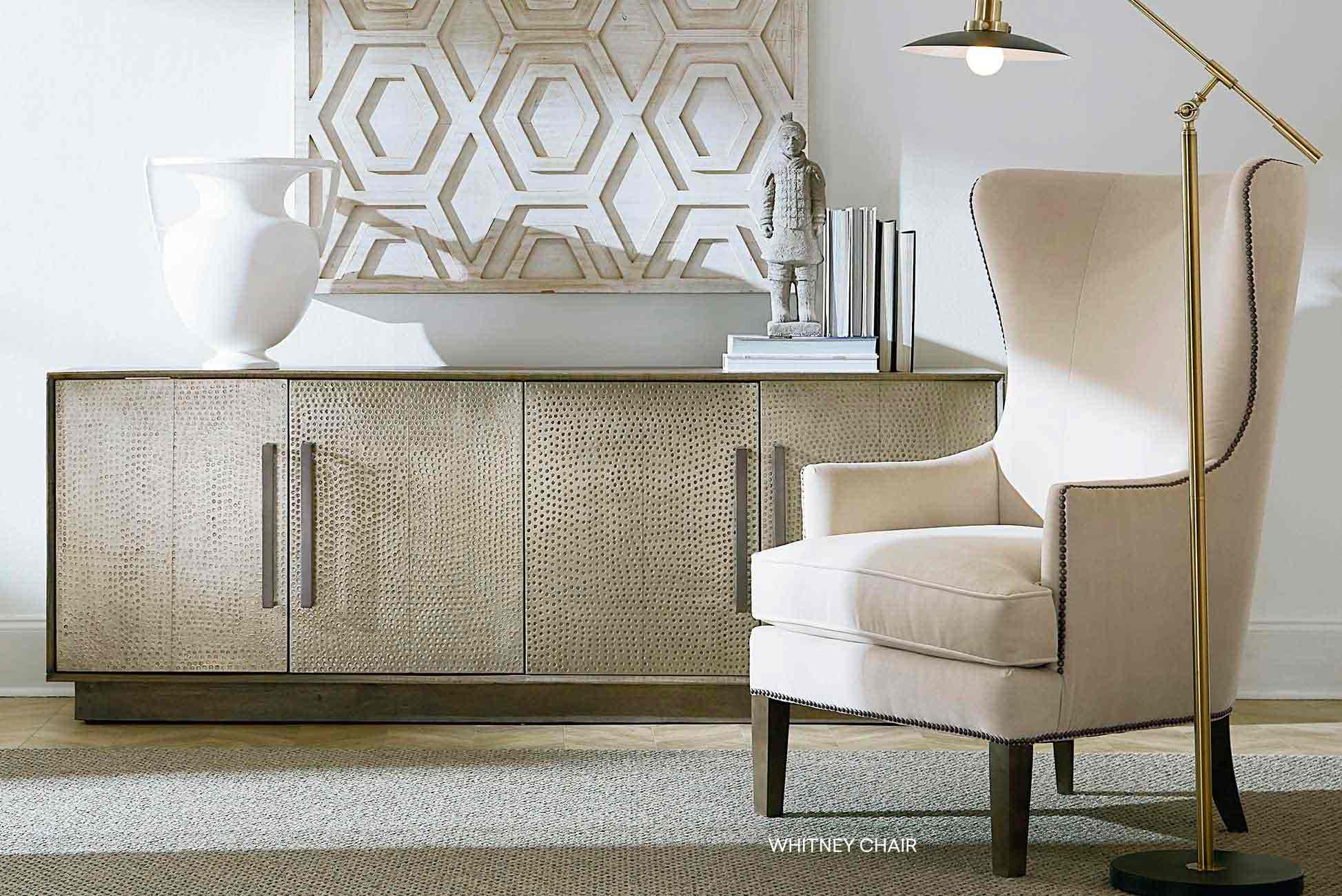
When choosing a lamp, it helps to factor in the design of the whole room, even if you are just thinking of a single table lamp, floor lamp, or pendant lamp. This article will help you choose room lighting for a home when you're designing your rooms. These few simple tricks will make choosing lights easy.
The Purpose Of Lighting
The right lighting can make or break a room—and it can make your room look and feel more comfortable and appealing. The right lighting can also affect your mood, boost productivity, and draw people together. When thinking of room lighting ideas for your home, it's important to properly combine ambient and task lighting. Keep reading to see why that matters here.
Different types of home lighting
Did you know that different lighting options serve different purposes in your home?
If you’re not lighting for the proper purposes in each space, you’ll find yourself with some dark and dingy corners… and not enough light to do what you want. You should plan for several lighting options within a space, including ambient, accent, overhead, path, and task/directional lighting. Let’s take a look at these different home lighting techniques and how they work together.
Pendant Lights to Set the Mood
Most rooms should have an overhead light, or pendant light, that serves as the focal point of the room. A chandelier adds a touch of elegance and sets the mood for both small and large spaces. When brainstorming room lighting ideas for your home, be sure to choose a chandelier or pendant light that matches your style and fills the space appropriately. For example, a crystal chandelier may look out of place in a rustic, lodge-type room. And a large pendant lamp (beautiful as it may be) can overpower a smaller room.
Your overhead lighting should be operable from a conveniently located light switch at the room’s entrance. For larger rooms and entries, you may want to opt for two hanging or pendant lights to fill the space. You can choose to light rooms with exposed lightbulbs or overhead lights that include glass or fabric shades. Either way, select a light fixture that fits your style and allows you to build the rest of the room’s lighting to complement the focal piece.
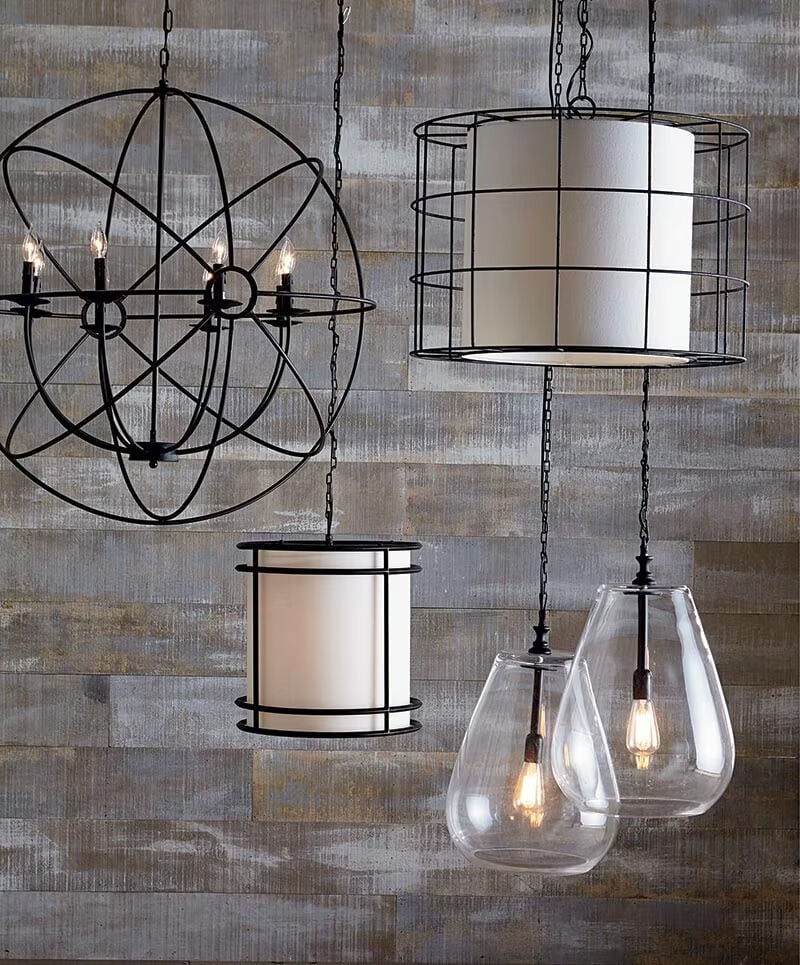
Designer Tip: Maximize space on your living room end tables and bedroom nightstands by opting for a pendant light to hang above each table instead of using a table lamp.
Ambient Lighting, and Where You Need It
Once you decide on your overhead light fixture, it’s time to assess the rest of the space. Lighting can reflect off of the walls and ceilings to produce extra light by day and evening as well as soft shadows at night. So, depending on the natural lighting and existing overhead light in a room, you’ll want to supplement with other lighting sources.
When coming up with room lighting ideas for your home, think about each room as a whole. Consider how you use each space as well as the length of time you typically spend there. Where do shadows fall? Are there any bright spots? Do you need to add warmth to a dark corner?
The best way to cover all of your lighting needs is to provide light at all different levels within each room: chandeliers and pendant light fixtures, floor lamps, task lamps, and table lamps. You may want to purchase lighting enclosed in glass to add brightness or a lamp with a lampshade for softer lighting. You’ll find countless styles, materials, shapes, and colors to choose from.
Task Lighting for All of Your Needs
Do you enjoy reading in bed or on the sofa? Do you play games with your family in the living room? Then you’ll want to include corner lights, tabletop lighting or floor lamps to accommodate your needs.
A floor lamp will work best beside a chair or sofa where you are reading, knitting or performing other tasks. A floor lamp can also provide extra mood lighting where you need it most. Some floor lamps are adjustable, so they can be raised or lowered according to your task.
The right table lamps can help you change the mood of a room in seconds. A table lamp or gooseneck lamp typically works best on a desktop or at the bedside to provide perfectly angled lighting every time. A task lamp can also work well on a desk or end table.
Don't Forget Path Lighting for Safety
When considering path lighting in your room lighting ideas for your home, most people think of outdoor needs. However, path lighting is also essential within the home. You’ll want to optimize your lighting in all of the high-traffic areas within your house to help prevent any potential falls or accidents. Consider a few well-placed wall sconces in a hallway, on both sides of a bathroom or hallway mirror or even to highlight a special piece of art.
Be sure to install extra lighting in all of the following areas to keep your family and your guests safe.
• Entryways
• Foyers
• Stairwells
• Steps
• Hallways
• Room transitions
• Basements
• Closets
Layering all three types of lighting in your living room
You can also increase combination lighting to add textures in any room: metal, wood, brass, chrome, crystal, glass, fabric shades, and more. And you can mix and match different lighting styles and shade styles (e.g., vintage and modern, utilitarian and mid-century modern) to reflect your own Bassett Lightingpersonal style.
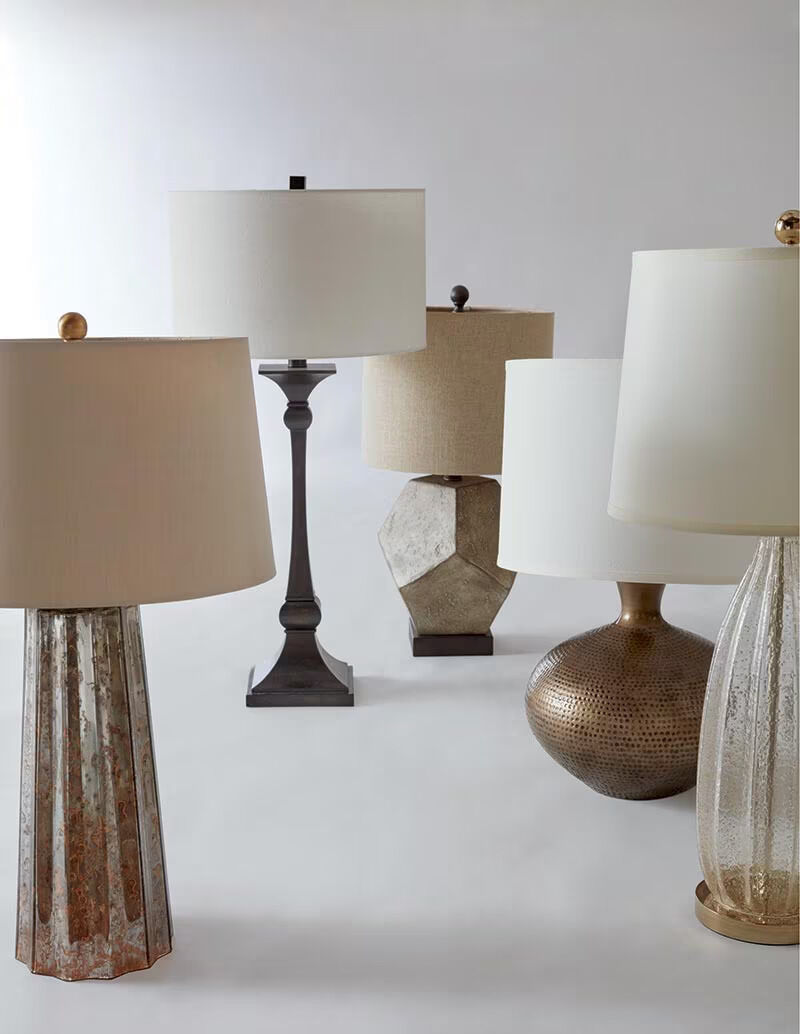
Ultimately, when coming up with room lighting ideas for your home, you’ll want to consider the lighting in three categories: low-level lighting, medium-height lighting, and overhead/pendant lights. And some spaces may require more than one overhead light. For example, you’ll always need a low-hanging pendant light above your kitchen table. And you may also want coordinating pendant lights over your island or bar seating area.
• Low-level Lighting: tabletop lamps
• Medium-height lighting: floor lamps, wall sconces
• Overhead lighting: pendant lights, chandeliers, flush-mount ceiling lights
BONUS: For a big wow factor in the master bathroom, combine the look of wall sconces beside your bathroom mirrors and a showpiece chandelier over the tub.
Styling your living room lighting
When making stylistic decisions the first thing to consider is your decorating style. You’ll find that your room lighting ideas for your home are available in styles to match any décor. You can even mix and match styles to your heart’s content.
• Farmhouse
• Rustic
• Utilitarian
• Vintage
• Modern
• Boho
• Mid-century modern
• Eclectic
• And more!
Once you’ve determined your style, it’s time to select the lighting that will help each space in your home serve the function that you desire and create the mood you’ll want too.
Choosing lights for any space in your room
Combining lighting in a room gives you the opportunity to add variety, contrasting height, and different points of interest throughout a space. Here are a few rules of thumb to consider.
1. Create visual interest. Combine ceiling, wall, floor, and table lighting for a mix of visual interest and lighting at different levels throughout a space. You don’t have to use all four types of lighting; however, a mix of three is usually best.
2. Consider scale. Choose lights that complement the other lighting in the space without overwhelming a room. For overhead lighting, choose a focal point light that adds a little bit of wow factor without being overpowering.
3. It’s OK to mix and match colors and designs. Everything doesn’t have to match. In fact, most rooms look better when there’s a little something unexpected thrown in the mix.
4. Avoid glare. Choose tabletop lamps that don’t expose the lightbulb from a seated or standing position. You’ll want to read or move about freely in your room without a glaring lightbulb. Hint: If you love the lamp, you may only need to change the shade for proper bulb coverage.
5. Let your lamp be a statement piece. An unexpected color, shape, material or lampshade is all that is needed for your lamp to add character and flair to a room.
Choosing a lamp or light fixture
Whether you’re choosing a room lamp or designing the lighting plan for a whole room, it helps to take stock of what already exists to keep the lighting consistent. Note the finishes in the room, as well as the style of your favorite piece in the room. If you love your modern sofa, you probably wouldn’t want a rustic table lamp beside it.
• For traditional decors, shiny, smooth materials tend to be more formal. Think brass, crystal, or porcelain. Traditional shades are often made of silk with more details.
• Rougher textures and finishes create a more casual feel. Casual lamps might be made from wood, textured ceramics, iron, or stone, with shades made from textured linen or cotton weave.
• Clean lines tend to be more contemporary, so materials such as brushed chrome or other metals, glass, and cast resin or stone lend themselves to contemporary designs.
Bear in mind that, when choosing room lighting for a home, shades change the color and brightness of the light in the room. If your lamp’s duty is to provide plenty of light for reading or to illuminate a dark corner, then a high quality, translucent paper or linen shade can provide diffuse light.
How many lamps do you really need? Well, a properly lit room needs a lamp every 50 square feet or so. At that spacing, a 12’ x 20’ room needs about five lamps. However, a general rule of thumb is that every room should have at least three lamps to keep it from looking too mysterious. Dark walls or furniture tend to absorb light, which means they require even more lighting than rooms that start with a lighter palette.
Tips for choosing a lamp or light fixture
Table lamps like Bassett Furniture’s Rowan Table Lamp are designed to sit on an end table, sofa table, console, or even a bedside table. When choosing a lamp for any table, consider the height of both the table and the lamp to make sure the lamp illuminates what Bassett Sausalitoyou want to see, but doesn’t shine in your eyes. The rule of thumb is that table lamps work best as task lights if the distance from the floor to the bottom of the shade is around 38" to 42" (to avoid glare from the lightbulb).
Make sure the table lamp matches the scale of both the table and the space.
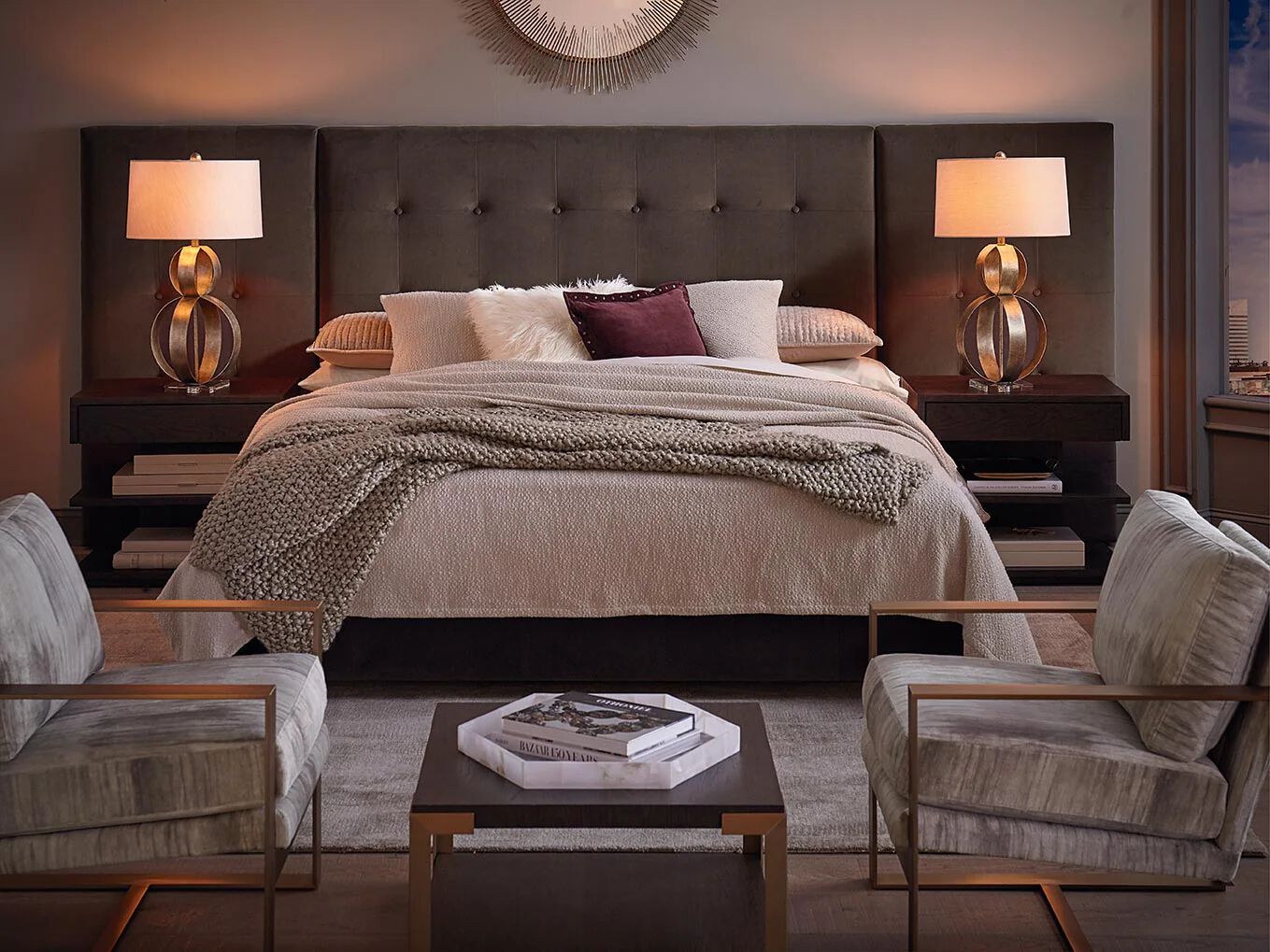
Large tables usually need large scale lamps. And keep in mind that most table lamps need ample desk or table space, or they may feel crowded.
Tips for choosing a floor lamp
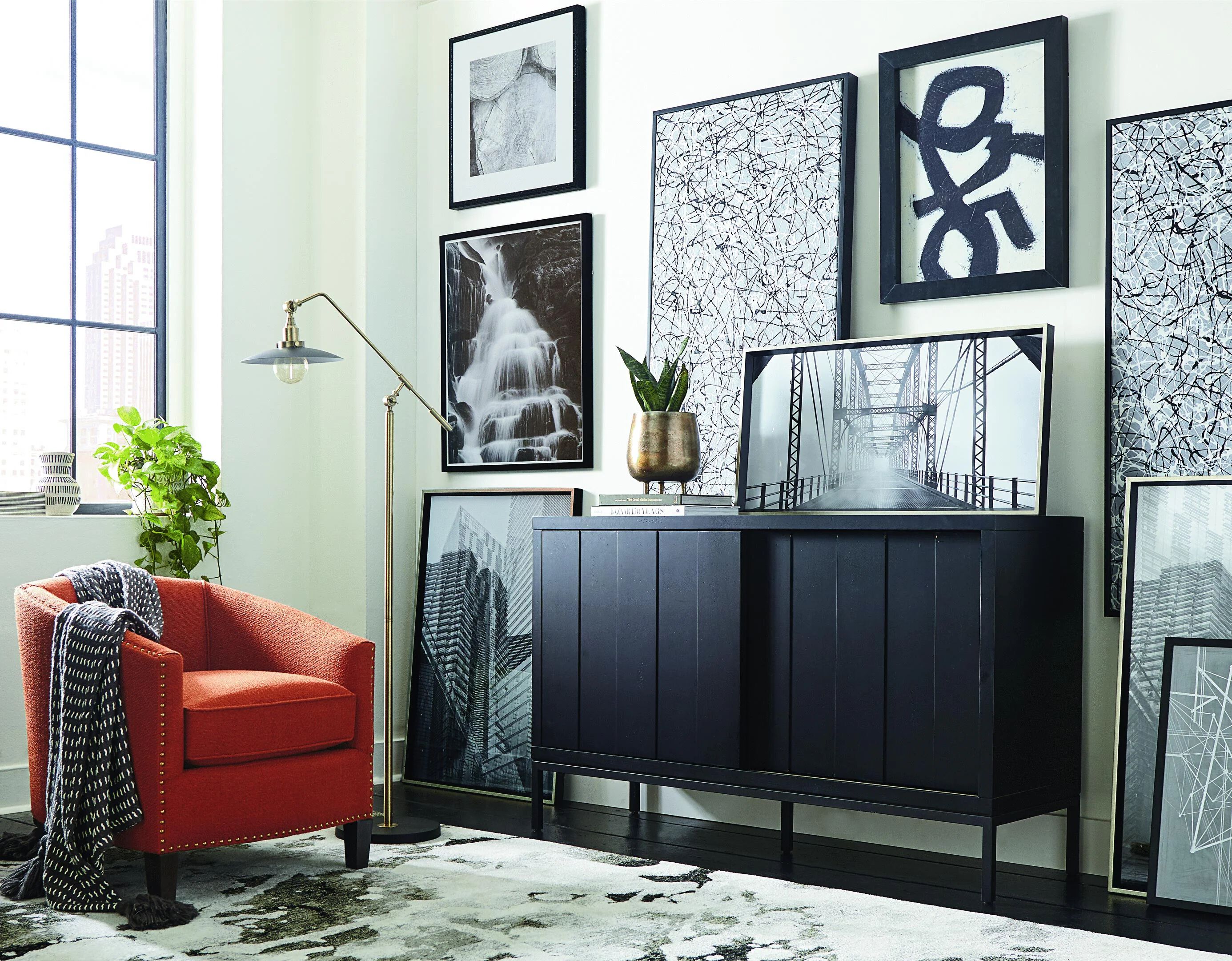
Floor lamps are another lighting option for spaces where there isn't a table when you're choosing room lighting for a home, or where a table lamp might be knocked over. These standing lamps work in corners and should be positioned out of the way of heavy traffic. Equally suitable for either ambient or accent lighting, floor lamps allow flexibility in function and style.
Floor lamps like Bassett Furniture’s Dwight Adjustable Floor Lamp make a good reading lamp next to a favorite reading chair. With any floor lamp, the bottom of the shade should measure about 47" to 49" above the floor to prevent glare.
Tips for choosing a pendant lamp
Pendant lamps vary in size, from small task lights to larger pendants that light dining tables or foyers with high ceilings.
Pendants provide great task lighting over counters or tables in a kitchen, dining room, or game room where you often need more light on the chopping block or the poker chips. On the other hand, a pendant lamp can also provide ambient lighting in nearly any room – kitchen, living room, foyer, bar, or any room that could use more general lighting. Bassett Furniture’s Odense Glass Pendant lamp complements nearly any style, from rustic farmhouse to industrial.
The typical height for hanging a pendant lamp over a table or a countertop is about 30 inches from the surface. This varies a bit depending on the fixture and space, but the important thing when choosing room lighting for a home is that people seated at the table or counter can see everyone and that there is no chance someone will run into the pendant.
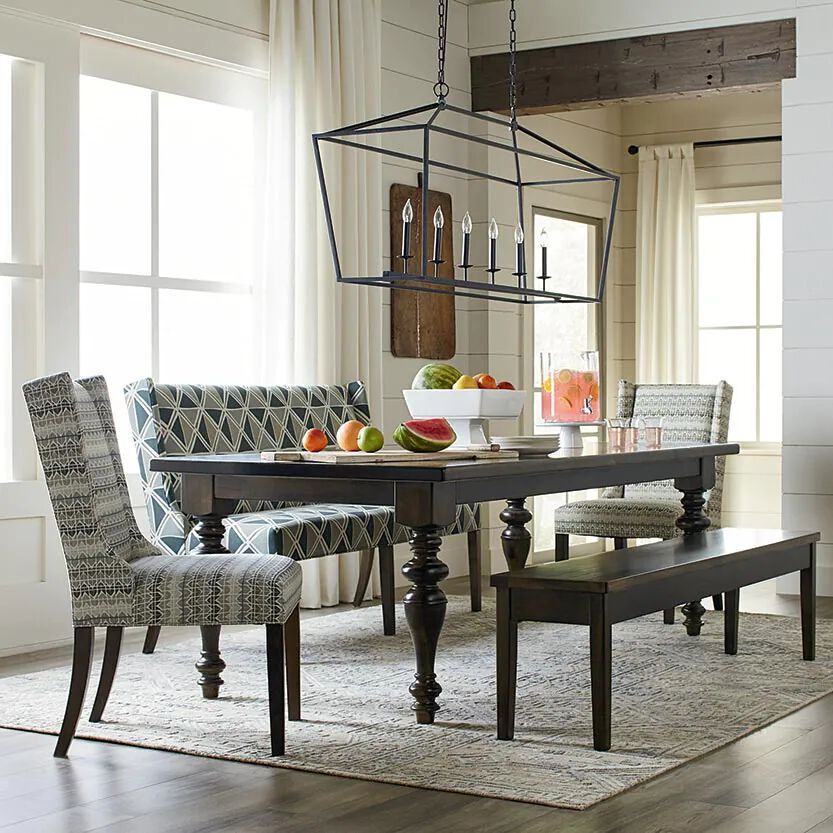
Lightbulbs Are Important Too
n addition to lighting styles, you may want to experiment with different bulbs (incandescent, fluorescent, full-spectrum, halogen, Edison bulbs, and LED lighting) in order to serve different purposes in your home and provide different levels of lighting.
You’ll also want to decide which spaces (dining room, living room, bedroom) to apply a dimmer switch so that you can choose the precise level of lighting you want for every occasion. Adding a dimmer switch makes it easy to control the brightness when you want. Each type of lightbulb can cast a different light in your room as well as change the color on your wall at different times of the day and how any soft shadows appear.
When you're experimenting with room lighting ideas for your home, the way you light a room can completely change the space. That’s why multiple lighting sources allow you to control the room’s ambiance and mood as well as how you use the space. Now, it’s time to start planning the lighting for your home! Shine on!
Lighting can influence your everyday life and change how you feel about a space. Make every space count in your home! Need help selecting the proper lighting for your home? Shop online or book an appointment at your local Basset store for all of your lighting needs!
The interior lighting experts
Whether you choose a table lamp, floor lamp, or pendant lamp, invest in high quality lamps you love and you will live with them for a long time. Although you may swap the shade or the finial somewhere down the line, you will move a favorite lamp from room to room and even home to home. Shop the Bassett Furniture Lighting collection for more inspiration.
Thank you for enjoying our archived content. We invite you to join us for the most up-to-date and trend-right insight into the design industry and our Bassett products.
